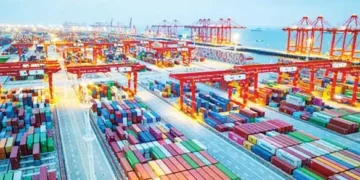Blitz Bureau
FEW phenomena have commanded as much strategic scrutiny and warranted as much circumspection from New Delhi in recent times as the deepening nexus between China and Pakistan. This is a partnership that transcends the purely military aspect, weaving itself into the very fabric of Pakistan’s economic future through the much-touted China-Pakistan Economic Corridor (CPEC), a flagship project of Beijing’s ambitious Belt and Road Initiative (BRI).
CPEC, for all its purported developmental benefits for Pakistan, is a clear manifestation of China’s grand strategy: to establish a firm foothold in the Indian Ocean region and to extend its influence deep into South Asia. The corridor, snaking through the Pakistan-occupied Kashmir territory, is not merely an economic artery; it is a strategic bypass, designed to provide China with critical access to the Arabian Sea via Gwadar Port. This access gives China a considerable stake in Pakistan, in its own interest. Coupled with China’s expanding naval presence, it presents a palpable challenge to India’s maritime security and its pre-eminence in the Indian Ocean.
Beyond the visible infrastructure, the ChinaPakistan axis is a symbiotic relationship of geopolitical design. Beijing’s consistent obstruction of UN resolutions aimed at sanctioning Pakistan-based terror operatives is a stark reminder of this unwavering support. For China, Pakistan serves as a crucial geostrategic pawn, a reliable counterweight to India’s growing economic and diplomatic heft. By bolstering Pakistan, Beijing ensures that New Delhi remains perpetually engaged on its western flank, diverting its strategic energies and resources from its broader regional and global ambitions.
This ‘two-front’ conundrum is not a hypothetical scenario for India; it is a live challenge that necessitates constant vigilance and strategic preparedness. The recent flare-ups along our western borders during Operation Sindoor, often featuring sophisticated Chinese-made military hardware in Pakistani hands, underscore this reality with stark clarity. Moreover, we are witnessing a concerted effort by China to cultivate a ‘trilateral nexus’ involving Pakistan and other neighbours, such as Bangladesh and Afghanistan. While framed as initiatives for regional stability and economic cooperation, these engagements are, at their core, calibrated attempts to dilute India’s influence and to construct a China-centric regional order. India must navigate this complex and evolving landscape with a multi-pronged approach that combines robust deterrence with astute diplomacy and strategic economic initiatives.
While India is an advocate for peace and stability, the realities of its neighbourhood demand a credible and decisive defence posture, capable of deterring any adventurism. At the same time, India must continue to leverage its soft power and deepen its engagement with other regional partners who may also harbour reservations about China’s burgeoning influence. India’s diplomatic outreach must be relentless, articulating its legitimate concerns while championing a rules-based international order.
Most crucially, India must accelerate its own economic growth and enhance its connectivity projects. A strong, self-reliant India, economically vibrant and strategically confident, is the most effective bulwark against any attempts to circumscribe its rise. The China-Pakistan nexus is not a passing phenomenon but a deeply entrenched geopolitical reality. It demands from India not just reactive measures but a comprehensive, far-sighted strategy. The challenge is formidable, but India – with its innate resilience and growing global stature – is more than capable of charting a course that safeguards its interests and ensures its rightful place on the world stage.
































